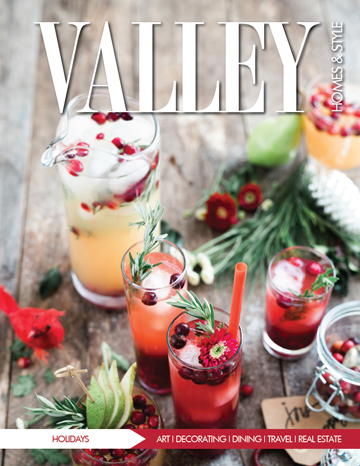Add flavor, nutrition and beauty to your food
by Mary Stickely-Godinez
Ahhh, dinner is served. It begins with a luscious salad with mixed greens, onions, cucumbers, tomatoes, flower petals, croutons … wait … flower petals? Yes, flowers can add wonderful flavor, nutrition, and a unique appearance to your dining experiences.
There are quite a few flowers that are edible. Dianthus, Centaurea, Marigolds and Nasturtiums are beautiful sprinkled as a multicolored confetti on salads or other foods as a garnish. Or make a beautiful lavender colored vinaigrette using chive blossoms. One of my favorite appetizers is to stuff squash blooms with a mild cheese mixture. I use ricotta, with a little bit of cream cheese, blended with finely minced fresh herbs of your choice. My favorite is a blend of dill, chives, and thyme. I fill the inside of the blossom, tie the petals together, dip it into a tempura batter and deep fry it until golden brown.
Chicken salad stuffed into a fresh daylily blossom makes a beautiful light luncheon or brunch entree. Use the onion flowers instead of diced onions in tuna salad for a colorful alternative. Daylily buds are also incredible stir-fried with chicken. Use rose or dandelion jam and butter that has been flavored using herbal flowers.
Roses or violets are delightful in baked deserts like cake. Lavender blossom sugar cookies are the perfect light sweet at a meal’s end. And finally you can wash down the meal with tea made from Hibiscus, Jasmine or Sage flowers.
Flowers provide nutrients like Vitamins A, B, C and E. Many provide antioxidants, and may also contain potassium, iron, sulfur or calcium. Flavors may be spicy, sweet, floral, licorice, pungent or peppery.
When choosing flowers, first be sure the flower is edible. Although many are fine, there are also quite a few that are poisonous. Carefully taste a petal to be sure you like the flavor before using it. Some flavors can be quite strong and very unique. Also, when you first start eating a new flower, eat small amounts at a time until you know how this flower will affect your digestion.
In addition, make sure you know the source of the flowers you are using. Pick them fresh for use and don’t pick from roadsides as these are subject to high levels of pollutants. Florist stocks often have been sprayed with pesticides which should also be avoided. Remove the sexual parts of the flowers, like the anthers, as these are often distasteful. And last, taste different colors of the same species of plant. Many flavors differ according to color.
I know it sounds like lots of rules. But it really is fun to try all the different options available and learning or creating new recipes for the various plants. It is amazing how many different flavors can be achieved. And it is great sport for guests to try to guess what flowers have been used in each dish. So go ahead and experiment. You will love the flavor and beauty flowers can bring to your table.
Edible Flowers
(I am using botanical names when there might be confusion with common names):
- Allium
- Agastache
- Basil
- Borage
- Calendula
- Centaurea
- Chamomile
- Chrysanthemum
- Citrus
- (orange, lemon, lime, grapefruit)
- Dandelions
- Dianthus
- Dill
- Fennel
- Fuchsia
- Gladiolus
- Hibiscus
- Jasmine
- Lemon Verbena
- Lilac
- Marigold
- Mint
- Monarda
- Nasturtium
- Orchid
- Oregano
- Radish
- Rose
- Rosemary
- Sage
- Squash
- Sunflower
- Tulips
- Violas

